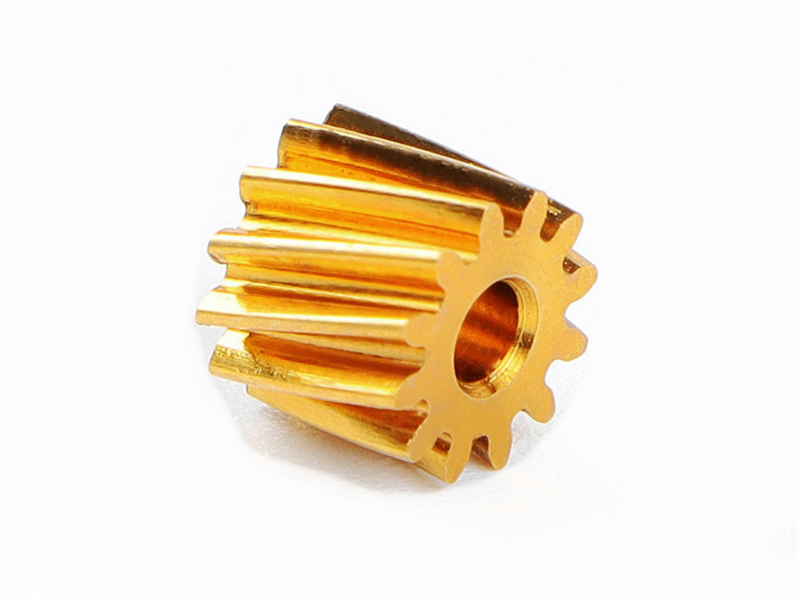Copper C110 CNC Machining Components for Power Generation Applications
Introduction
The power generation industry relies on materials capable of superior electrical conductivity, excellent thermal management, and corrosion resistance. Copper C110 (TU0) is extensively utilized due to its outstanding electrical conductivity (up to 101% IACS), superior thermal conductivity, ease of machinability, and high corrosion resistance. These features make Copper C110 ideal for manufacturing components such as busbars, electrical contacts, heat exchanger parts, and cooling system components.
Utilizing advanced CNC machining, manufacturers precisely fabricate complex Copper C110 components to strict dimensional accuracy and excellent surface finishes. CNC machining processes ensure consistent quality, reliability, and superior performance, significantly enhancing the efficiency and durability of critical power generation equipment.
Copper C110 for Power Generation Applications
Material Performance Comparison
Material | Electrical Conductivity (% IACS) | Thermal Conductivity (W/m·K) | Tensile Strength (MPa) | Typical Applications | Advantage |
|---|---|---|---|---|---|
101 | 391 | 220-310 | Busbars, connectors, cooling systems | Exceptional conductivity, high corrosion resistance | |
101 | 390 | 200-320 | Electrical contacts, thermal components | High purity, excellent electrical performance | |
22-25 | 105 | 1100-1300 | Spring contacts, high-stress parts | High strength, good fatigue resistance | |
26 | 115 | 340-470 | Fittings, connectors | Excellent machinability, moderate conductivity |
Material Selection Strategy
Selecting suitable copper alloys for power generation depends on electrical and thermal performance, mechanical strength, and specific application demands:
Busbars, connectors, heat exchangers, and critical electrical components require maximum electrical conductivity (101% IACS), excellent thermal conductivity (391 W/m·K), and corrosion resistance utilizing Copper C110, significantly enhancing electrical performance and reliability.
High-purity electrical contacts and precision thermal management parts demanding similar electrical and thermal performance with high purity benefit from Copper C101 (T2), ensuring optimum reliability and low electrical resistance.
High-stress electrical spring contacts and heavily loaded components needing extreme strength (up to 1300 MPa) select Beryllium Copper C172, balancing electrical performance with superior mechanical durability.
General fittings, connectors, and non-critical components requiring excellent machinability and moderate conductivity (26% IACS) use Brass C360, providing a cost-effective solution.
CNC Machining Processes
Process Performance Comparison
CNC Machining Technology | Dimensional Accuracy (mm) | Surface Roughness (Ra μm) | Typical Applications | Key Advantages |
|---|---|---|---|---|
±0.02 | 1.6-3.2 | Basic connectors, busbar segments | Cost-effective, consistent quality | |
±0.015 | 0.8-1.6 | Rotational parts, terminal fittings | Improved precision, efficient machining | |
±0.005 | 0.4-0.8 | Complex cooling components, precision contacts | Superior accuracy, exceptional surface finish | |
±0.003-0.01 | 0.2-0.6 | High-precision connectors, detailed sensor housings | Maximum precision, intricate geometries |
Process Selection Strategy
The choice of CNC machining processes for Copper C110 components depends on complexity, dimensional tolerances, and specific application requirements:
Basic connectors, busbar segments, and standard components requiring moderate precision (±0.02 mm) economically utilize 3 Axis CNC Milling, providing consistent, cost-effective quality.
Rotational components, terminal fittings, and moderately complex parts demanding enhanced precision (±0.015 mm) benefit from 4 Axis CNC Milling, reducing setups and improving accuracy.
Complex cooling system components, precision electrical contacts, and critical heat exchanger parts requiring high accuracy (±0.005 mm) and fine surface finishes (Ra ≤0.8 μm) significantly benefit from 5 Axis CNC Milling, optimizing performance and durability.
High-precision connectors, intricate sensor housings, and specialized parts requiring maximum precision (±0.003 mm) employ Precision Multi-Axis CNC Machining, ensuring the highest reliability and accuracy.
Surface Treatment
Surface Treatment Performance
Treatment Method | Corrosion Resistance | Electrical Performance | Max Operating Temp (°C) | Typical Applications | Key Features |
|---|---|---|---|---|---|
Electroplating (Silver, Tin) | Exceptional (≥1000 hrs ASTM B117) | Excellent conductivity | Up to 200 | Electrical contacts, busbars | Enhanced conductivity, corrosion resistance |
Excellent (~900 hrs ASTM B117) | Maintains conductivity | Up to 300 | Cooling components, heat exchangers | Smooth finish, improved corrosion resistance | |
Excellent (≥1000 hrs ASTM B117) | Maintains conductivity | Up to 200 | Internal components, precision connectors | Surface purity, corrosion protection | |
Very Good (≥800 hrs ASTM B117) | Slightly reduced | Up to 120 | External housings, visible components | Enhanced aesthetic appearance, corrosion protection |
Surface Treatment Selection
Surface treatments for Copper C110 components depend on conductivity requirements, corrosion resistance, and operational environments:
Electrical contacts, busbars, and connectors requiring maximum electrical conductivity and exceptional corrosion resistance significantly benefit from Silver or Tin Electroplating, optimizing electrical efficiency and component durability.
Heat exchanger components, cooling systems, and critical internal parts need smooth finishes and reliable conductivity. Electropolishing is used to enhance corrosion resistance and thermal performance.
Precision internal components, sensitive connectors, and fittings exposed to corrosion environments benefit from Passivation, preserving electrical performance and component integrity.
External protective covers, visible parts, and decorative components requiring corrosion resistance and improved aesthetics employ Clear Coating, effectively balancing appearance and performance.
Quality Control
Quality Control Procedures
Precise dimensional verification using Coordinate Measuring Machines (CMM) and optical comparators.
Surface roughness inspection with precision profilometers.
Electrical conductivity verification per ASTM standards.
Mechanical property testing (tensile, hardness) according to ASTM.
Corrosion resistance testing through ASTM B117 (Salt Spray Test).
Non-destructive testing (NDT) including ultrasonic and X-ray inspections.
Comprehensive documentation following ISO 9001 and specific power generation quality standards.
Industry Applications
Copper C110 Power Generation Component Applications
High-performance busbars and electrical connectors.
Heat exchanger and cooling system components.
Electrical contacts and terminals.
Precision housings for sensors and control devices.
Related FAQs:
Why is Copper C110 ideal for power generation applications?
How does CNC machining enhance Copper C110 component precision?
Which power generation parts benefit most from Copper C110?
What surface treatments best suit Copper C110 power generation components?
What quality standards apply to CNC machining of Copper C110 in power generation?

